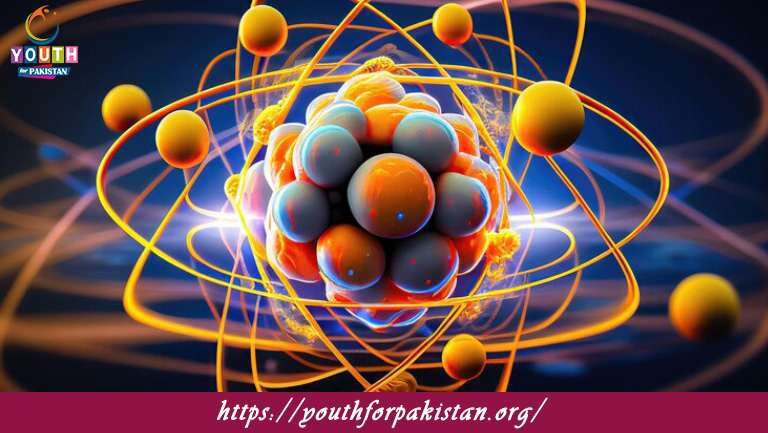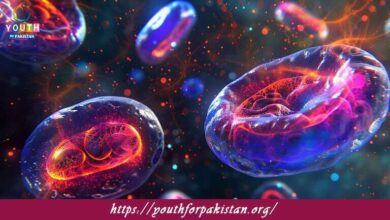11th Class Chemistry Chapter 6 MCQs with Answers

Understand bonding concepts with Chemical Bonding MCQs, covering ionic, covalent, and metallic bonds. These Chapter 6 quizzes are tailored for 11th Class Chemistry learners.
Which of the following statements is true about covalent bonding?
a) Electrons are transferred from one atom to another.
b) Electrons are shared between atoms.
c) It only occurs between metal atoms.
d) It results in the formation of ions.
An ionic bond is formed between:
a) Two nonmetals
b) A metal and a nonmetal
c) Two metals
d) Two noble gases
The force that holds atoms together in a molecule is called:
a) Ionic bond
b) Covalent bond
c) Metallic bond
d) Hydrogen bond
Which of the following elements is most likely to form an ionic bond with chlorine (Cl)?
a) Lithium (Li)
b) Carbon (C)
c) Nitrogen (N)
d) Oxygen (O)
The chemical formula for sodium chloride (table salt) is:
a) NaCl
b) H2O
c) CO2
d) CaCO3
Which of the following statements is true about metallic bonding?
a) Electrons are transferred from one atom to another.
b) Electrons are shared between atoms.
c) It only occurs between metal atoms.
d) It results in the formation of ions.
The bond formed between hydrogen and oxygen in a water molecule (H2O) is an example of:
a) Ionic bond
b) Covalent bond
c) Metallic bond
d) Hydrogen bond
In an ionic bond, atoms:
a) Share electrons
b) Transfer electrons
c) Have equal electronegativity
d) Have identical atomic numbers
A covalent bond is formed when atoms:
a) Transfer electrons
b) Share electrons
c) Lose protons
d) Gain neutrons
Which of the following molecules has a polar covalent bond?
a) O2
b) H2
c) HCl
d) N2
The electronegativity of an element measures its ability to:
a) Gain protons
b) Lose protons
c) Gain electrons
d) Attract electrons in a chemical bond
The chemical bond formed between two chlorine atoms (Cl2) is a:
a) Ionic bond
b) Covalent bond
c) Metallic bond
d) Hydrogen bond
Which of the following elements is most likely to form an ionic bond with fluorine (F)?
a) Sodium (N
a)
b) Carbon (C)
c) Nitrogen (N)
d) Oxygen (O)
A chemical bond formed between a metal and a nonmetal is likely to be:
a) Ionic bond
b) Covalent bond
c) Metallic bond
d) Hydrogen bond
The force that holds atoms together in a metal is called:
a) Ionic bond
b) Covalent bond
c) Metallic bond
d) Hydrogen bond
In an ionic bond, one atom:
a) Loses electrons and becomes positively charged
b) Gains electrons and becomes positively charged
c) Loses electrons and becomes negatively charged
d) Gains electrons and becomes negatively charged
A covalent bond is formed when atoms:
a) Transfer electrons
b) Share electrons
c) Gain protons
d) Lose neutrons
Which of the following molecules has a nonpolar covalent bond?
a) HCl
b) NH3
c) O2
d) H2O
The electronegativity of an element indicates its tendency to:
a) Lose protons
b) Gain protons
c) Lose electrons
d) Attract electrons in a chemical bond
The chemical bond formed between hydrogen and oxygen in a water molecule (H2O) is an example of:
a) Ionic bond
b) Covalent bond
c) Metallic bond
d) Hydrogen bond
In an ionic bond, atoms:
a) Share electrons
b) Transfer electrons
c) Have equal electronegativity
d) Have identical atomic numbers
A covalent bond is formed when atoms:
a) Transfer electrons
b) Share electrons
c) Lose protons
d) Gain neutrons
Which of the following molecules has a polar covalent bond?
a) O2
b) H2
c) HCl
d) N2
The electronegativity of an element measures its ability to:
a) Gain protons
b) Lose protons
c) Gain electrons
d) Attract electrons in a chemical bond
The chemical bond formed between two chlorine atoms (Cl2) is a:
a) Ionic bond
b) Covalent bond
c) Metallic bond
d) Hydrogen bond
Which of the following elements is most likely to form an ionic bond with fluorine (F)?
a) Sodium (N
a)
b) Carbon (C)
c) Nitrogen (N)
d) Oxygen (O)
a)
A chemical bond formed between a metal and a nonmetal is likely to be:
a) Ionic bond
b) Covalent bond
c) Metallic bond
d) Hydrogen bond
The force that holds atoms together in a metal is called:
a) Ionic bond
b) Covalent bond
c) Metallic bond
d) Hydrogen bond
In an ionic bond, one atom:
a) Loses electrons and becomes positively charged
b) Gains electrons and becomes positively charged
c) Loses electrons and becomes negatively charged
d) Gains electrons and becomes negatively charged
A covalent bond is formed when atoms:
a) Transfer electrons
b) Share electrons
c) Gain protons
d) Lose neutrons
Which of the following molecules has a nonpolar covalent bond?
a) HCl
b) NH3
c) O2
d) H2O
The electronegativity of an element indicates its tendency to:
a) Lose protons
b) Gain protons
c) Lose electrons
d) Attract electrons in a chemical bond
The chemical bond formed between hydrogen and oxygen in a water molecule (H2O) is an example of:
a) Ionic bond
b) Covalent bond
c) Metallic bond
d) Hydrogen bond
In an ionic bond, atoms:
a) Share electrons
b) Transfer electrons
c) Have equal electronegativity
d) Have identical atomic numbers
A covalent bond is formed when atoms:
a) Transfer electrons
b) Share electrons
c) Lose protons
d) Gain neutrons
Which of the following molecules has a polar covalent bond?
a) O2
b) H2
c) HCl
d) N2
The electronegativity of an element measures its ability to:
a) Gain protons
b) Lose protons
c) Gain electrons
d) Attract electrons in a chemical bond
The chemical bond formed between two chlorine atoms (Cl2) is a:
a) Ionic bond
b) Covalent bond
c) Metallic bond
d) Hydrogen bond
Which of the following elements is most likely to form an ionic bond with fluorine (F)?
a) Sodium (N
a)
b) Carbon (C)
c) Nitrogen (N)
d) Oxygen (O)
A chemical bond formed between a metal and a nonmetal is likely to be:
a) Ionic bond
b) Covalent bond
c) Metallic bond
d) Hydrogen bond
The force that holds atoms together in a metal is called:
a) Ionic bond
b) Covalent bond
c) Metallic bond
d) Hydrogen bond
In an ionic bond, one atom:
a) Loses electrons and becomes positively charged
b) Gains electrons and becomes positively charged
c) Loses electrons and becomes negatively charged
d) Gains electrons and becomes negatively charged
A covalent bond is formed when atoms:
a) Transfer electrons
b) Share electrons
c) Gain protons
d) Lose neutrons
Which of the following molecules has a nonpolar covalent bond?
a) HCl
b) NH3
c) O2
d) H2O
The electronegativity of an element indicates its tendency to:
a) Lose protons
b) Gain protons
c) Lose electrons
d) Attract electrons in a chemical bond
The chemical bond formed between hydrogen and oxygen in a water molecule (H2O) is an example of:
a) Ionic bond
b) Covalent bond
c) Metallic bond
d) Hydrogen bond
In an ionic bond, atoms:
a) Share electrons
b) Transfer electrons
c) Have equal electronegativity
d) Have identical atomic numbers
A covalent bond is formed when atoms:
a) Transfer electrons
b) Share electrons
c) Lose protons
d) Gain neutrons
Which of the following molecules has a polar covalent bond?
a) O2
b) H2
c) HCl
d) N2
The electronegativity of an element measures its ability to:
a) Gain protons
b) Lose protons
c) Gain electrons
d) Attract electrons in a chemical bond
The chemical bond formed between two chlorine atoms (Cl2) is a:
a) Ionic bond
b) Covalent bond
c) Metallic bond
d) Hydrogen bond
Which of the following elements is most likely to form an ionic bond with fluorine (F)?
a) Sodium (Na)
b) Carbon (C)
c) Nitrogen (N)
d) Oxygen (O)
A chemical bond formed between a metal and a nonmetal is likely to be:
a) Ionic bond
b) Covalent bond
c) Metallic bond
d) Hydrogen bond
The force that holds atoms together in a metal is called:
a) Ionic bond
b) Covalent bond
c) Metallic bond
d) Hydrogen bond
In an ionic bond, one atom:
a) Loses electrons and becomes positively charged
b) Gains electrons and becomes positively charged
c) Loses electrons and becomes negatively charged
d) Gains electrons and becomes negatively charged
A covalent bond is formed when atoms:
a) Transfer electrons
b) Share electrons
c) Gain protons
d) Lose neutrons
Which of the following molecules has a nonpolar covalent bond?
a) HCl
b) NH3
c) O2
d) H2O
The electronegativity of an element indicates its tendency to:
a) Lose protons
b) Gain protons
c) Lose electrons
d) Attract electrons in a chemical bond
The chemical bond formed between hydrogen and oxygen in a water molecule (H2O) is an example of:
a) Ionic bond
b) Covalent bond
c) Metallic bond
d) Hydrogen bond
In an ionic bond, atoms:
a) Share electrons
b) Transfer electrons
c) Have equal electronegativity
d) Have identical atomic numbers
If you are interested to enhance your knowledge regarding Physics, Chemistry, Biology, and Computer please click on the link of each category, you will be redirected to dedicated website for each category.




